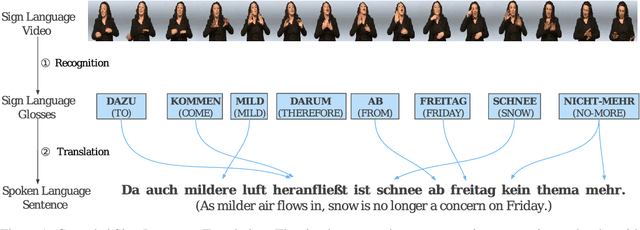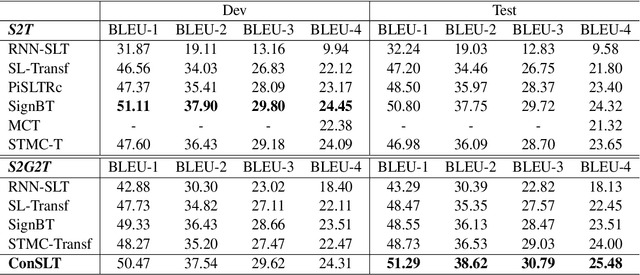Biao Fu
From Data-Centric to Sample-Centric: Enhancing LLM Reasoning via Progressive Optimization
Jul 09, 2025



Abstract:Reinforcement learning with verifiable rewards (RLVR) has recently advanced the reasoning capabilities of large language models (LLMs). While prior work has emphasized algorithmic design, data curation, and reward shaping, we investigate RLVR from a sample-centric perspective and introduce LPPO (Learning-Progress and Prefix-guided Optimization), a framework of progressive optimization techniques. Our work addresses a critical question: how to best leverage a small set of trusted, high-quality demonstrations, rather than simply scaling up data volume. First, motivated by how hints aid human problem-solving, we propose prefix-guided sampling, an online data augmentation method that incorporates partial solution prefixes from expert demonstrations to guide the policy, particularly for challenging instances. Second, inspired by how humans focus on important questions aligned with their current capabilities, we introduce learning-progress weighting, a dynamic strategy that adjusts each training sample's influence based on model progression. We estimate sample-level learning progress via an exponential moving average of per-sample pass rates, promoting samples that foster learning and de-emphasizing stagnant ones. Experiments on mathematical-reasoning benchmarks demonstrate that our methods outperform strong baselines, yielding faster convergence and a higher performance ceiling.
How Well Do Large Reasoning Models Translate? A Comprehensive Evaluation for Multi-Domain Machine Translation
May 26, 2025Abstract:Large language models (LLMs) have demonstrated strong performance in general-purpose machine translation, but their effectiveness in complex, domain-sensitive translation tasks remains underexplored. Recent advancements in Large Reasoning Models (LRMs), raise the question of whether structured reasoning can enhance translation quality across diverse domains. In this work, we compare the performance of LRMs with traditional LLMs across 15 representative domains and four translation directions. Our evaluation considers various factors, including task difficulty, input length, and terminology density. We use a combination of automatic metrics and an enhanced MQM-based evaluation hierarchy to assess translation quality. Our findings show that LRMs consistently outperform traditional LLMs in semantically complex domains, especially in long-text and high-difficulty translation scenarios. Moreover, domain-adaptive prompting strategies further improve performance by better leveraging the reasoning capabilities of LRMs. These results highlight the potential of structured reasoning in MDMT tasks and provide valuable insights for optimizing translation systems in domain-sensitive contexts.
Efficient and Adaptive Simultaneous Speech Translation with Fully Unidirectional Architecture
Apr 16, 2025



Abstract:Simultaneous speech translation (SimulST) produces translations incrementally while processing partial speech input. Although large language models (LLMs) have showcased strong capabilities in offline translation tasks, applying them to SimulST poses notable challenges. Existing LLM-based SimulST approaches either incur significant computational overhead due to repeated encoding of bidirectional speech encoder, or they depend on a fixed read/write policy, limiting the efficiency and performance. In this work, we introduce Efficient and Adaptive Simultaneous Speech Translation (EASiST) with fully unidirectional architecture, including both speech encoder and LLM. EASiST includes a multi-latency data curation strategy to generate semantically aligned SimulST training samples and redefines SimulST as an interleaved generation task with explicit read/write tokens. To facilitate adaptive inference, we incorporate a lightweight policy head that dynamically predicts read/write actions. Additionally, we employ a multi-stage training strategy to align speech-text modalities and optimize both translation and policy behavior. Experiments on the MuST-C En$\rightarrow$De and En$\rightarrow$Es datasets demonstrate that EASiST offers superior latency-quality trade-offs compared to several strong baselines.
LLMs Can Achieve High-quality Simultaneous Machine Translation as Efficiently as Offline
Apr 13, 2025Abstract:When the complete source sentence is provided, Large Language Models (LLMs) perform excellently in offline machine translation even with a simple prompt "Translate the following sentence from [src lang] into [tgt lang]:". However, in many real scenarios, the source tokens arrive in a streaming manner and simultaneous machine translation (SiMT) is required, then the efficiency and performance of decoder-only LLMs are significantly limited by their auto-regressive nature. To enable LLMs to achieve high-quality SiMT as efficiently as offline translation, we propose a novel paradigm that includes constructing supervised fine-tuning (SFT) data for SiMT, along with new training and inference strategies. To replicate the token input/output stream in SiMT, the source and target tokens are rearranged into an interleaved sequence, separated by special tokens according to varying latency requirements. This enables powerful LLMs to learn read and write operations adaptively, based on varying latency prompts, while still maintaining efficient auto-regressive decoding. Experimental results show that, even with limited SFT data, our approach achieves state-of-the-art performance across various SiMT benchmarks, and preserves the original abilities of offline translation. Moreover, our approach generalizes well to document-level SiMT setting without requiring specific fine-tuning, even beyond the offline translation model.
Conditional Variational Autoencoder for Sign Language Translation with Cross-Modal Alignment
Dec 25, 2023



Abstract:Sign language translation (SLT) aims to convert continuous sign language videos into textual sentences. As a typical multi-modal task, there exists an inherent modality gap between sign language videos and spoken language text, which makes the cross-modal alignment between visual and textual modalities crucial. However, previous studies tend to rely on an intermediate sign gloss representation to help alleviate the cross-modal problem thereby neglecting the alignment across modalities that may lead to compromised results. To address this issue, we propose a novel framework based on Conditional Variational autoencoder for SLT (CV-SLT) that facilitates direct and sufficient cross-modal alignment between sign language videos and spoken language text. Specifically, our CV-SLT consists of two paths with two Kullback-Leibler (KL) divergences to regularize the outputs of the encoder and decoder, respectively. In the prior path, the model solely relies on visual information to predict the target text; whereas in the posterior path, it simultaneously encodes visual information and textual knowledge to reconstruct the target text. The first KL divergence optimizes the conditional variational autoencoder and regularizes the encoder outputs, while the second KL divergence performs a self-distillation from the posterior path to the prior path, ensuring the consistency of decoder outputs. We further enhance the integration of textual information to the posterior path by employing a shared Attention Residual Gaussian Distribution (ARGD), which considers the textual information in the posterior path as a residual component relative to the prior path. Extensive experiments conducted on public datasets (PHOENIX14T and CSL-daily) demonstrate the effectiveness of our framework, achieving new state-of-the-art results while significantly alleviating the cross-modal representation discrepancy.
Layer-wise Representation Fusion for Compositional Generalization
Jul 20, 2023



Abstract:Despite successes across a broad range of applications, sequence-to-sequence models' construct of solutions are argued to be less compositional than human-like generalization. There is mounting evidence that one of the reasons hindering compositional generalization is representations of the encoder and decoder uppermost layer are entangled. In other words, the syntactic and semantic representations of sequences are twisted inappropriately. However, most previous studies mainly concentrate on enhancing token-level semantic information to alleviate the representations entanglement problem, rather than composing and using the syntactic and semantic representations of sequences appropriately as humans do. In addition, we explain why the entanglement problem exists from the perspective of recent studies about training deeper Transformer, mainly owing to the ``shallow'' residual connections and its simple, one-step operations, which fails to fuse previous layers' information effectively. Starting from this finding and inspired by humans' strategies, we propose \textsc{FuSion} (\textbf{Fu}sing \textbf{S}yntactic and Semant\textbf{i}c Representati\textbf{on}s), an extension to sequence-to-sequence models to learn to fuse previous layers' information back into the encoding and decoding process appropriately through introducing a \emph{fuse-attention module} at each encoder and decoder layer. \textsc{FuSion} achieves competitive and even \textbf{state-of-the-art} results on two realistic benchmarks, which empirically demonstrates the effectiveness of our proposal.
Learn to Compose Syntactic and Semantic Representations Appropriately for Compositional Generalization
May 20, 2023Abstract:Recent studies have shown that sequence-to-sequence (Seq2Seq) models are limited in solving the compositional generalization (CG) tasks, failing to systematically generalize to unseen compositions of seen components. There is mounting evidence that one of the reasons hindering CG is the representation of the encoder uppermost layer is entangled. In other words, the syntactic and semantic representations of sequences are twisted inappropriately. However, most previous studies mainly concentrate on enhancing semantic information at token-level, rather than composing the syntactic and semantic representations of sequences appropriately as humans do. In addition, we consider the representation entanglement problem they found is not comprehensive, and further hypothesize that source keys and values representations passing into different decoder layers are also entangled. Staring from this intuition and inspired by humans' strategies for CG, we propose COMPSITION (Compose Syntactic and Semantic Representations), an extension to Seq2Seq models to learn to compose representations of different encoder layers appropriately for generating different keys and values passing into different decoder layers through introducing a composed layer between the encoder and decoder. COMPSITION achieves competitive and even state-of-the-art results on two realistic benchmarks, which empirically demonstrates the effectiveness of our proposal.
Adapting Offline Speech Translation Models for Streaming with Future-Aware Distillation and Inference
Mar 14, 2023Abstract:A popular approach to streaming speech translation is to employ a single offline model with a \textit{wait-$k$} policy to support different latency requirements, which is simpler than training multiple online models with different latency constraints. However, there is a mismatch problem in using a model trained with complete utterances for streaming inference with partial input. We demonstrate that speech representations extracted at the end of a streaming input are significantly different from those extracted from a complete utterance. To address this issue, we propose a new approach called Future-Aware Streaming Translation (FAST) that adapts an offline ST model for streaming input. FAST includes a Future-Aware Inference (FAI) strategy that incorporates future context through a trainable masked embedding, and a Future-Aware Distillation (FAD) framework that transfers future context from an approximation of full speech to streaming input. Our experiments on the MuST-C EnDe, EnEs, and EnFr benchmarks show that FAST achieves better trade-offs between translation quality and latency than strong baselines. Extensive analyses suggest that our methods effectively alleviate the aforementioned mismatch problem between offline training and online inference.
ConSLT: A Token-level Contrastive Framework for Sign Language Translation
Apr 11, 2022



Abstract:Sign language translation (SLT) is an important technology that can bridge the communication gap between the deaf and the hearing people. SLT task is essentially a low-resource problem due to the scarcity of publicly available parallel data. To this end, inspired by the success of neural machine translation methods based on contrastive learning, we propose ConSLT, a novel token-level \textbf{Con}trastive learning framework for \textbf{S}ign \textbf{L}anguage \textbf{T}ranslation. Unlike previous contrastive learning based works whose goal is to obtain better sentence representation, ConSLT aims to learn effective token representation by pushing apart tokens from different sentences. Concretely, our model follows the two-stage SLT method. First, in the recoginition stage, we use a state-of-the-art continuous sign language recognition model to recognize glosses from sign frames. Then, in the translation stage, we adopt the Transformer framework while introducing contrastive learning. Specifically, we pass each sign glosses to the Transformer model twice to obtain two different hidden layer representations for each token as "positive examples" and randomly sample K tokens that are not in the current sentence from the vocabulary as "negative examples" for each token. Experimental results demonstrate that ConSLT achieves new state-of-the-art performance on PHOENIX14T dataset, with +1.48 BLEU improvements.
 Add to Chrome
Add to Chrome Add to Firefox
Add to Firefox Add to Edge
Add to Edge